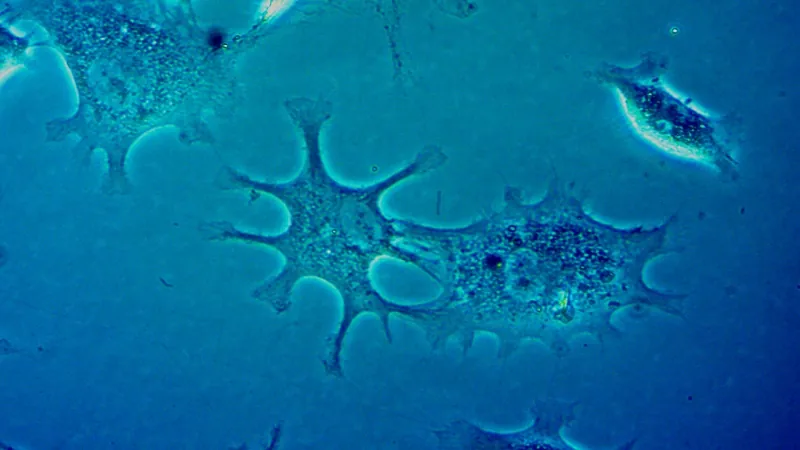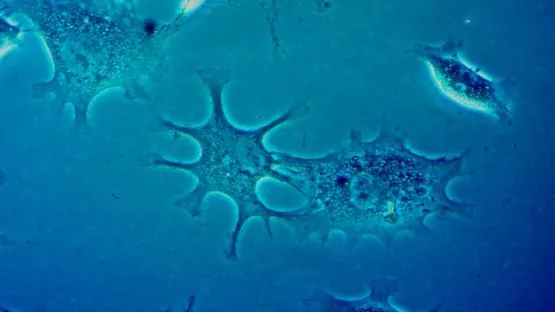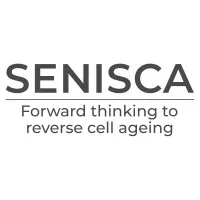Senescent cells accumulate in our bodies as we age, increasing inflammation and raising our risk of suffering from cancer and other age-related diseases. A new biotech startup plans to reset aged senescent cells to a youthful state to deal with this problem.
The rejuvenation biotechnology field is growing at a steady pace these days, with new startups appearing more frequently and with an increasing array of novel approaches to age-related decline.
One of the more promising startups to recently emerge is SENISCA, a company born from the lab at the University of Exeter’s College of Medicine and Health. Co-founded by Professor Lorna Harries, this company has a particularly intriguing approach to addressing the harmful senescent cells that cause havoc as they build up in our bodies with age.
What are senescent cells?
As you age, increasing numbers of your cells enter into a state known as senescence. Senescent cells do not divide or support the tissues of which they are part; instead, they emit a range of potentially harmful chemical signals that encourage nearby healthy cells to enter the same senescent state.
Senescent cells only make up a small number of total cells in the body, but they secrete proinflammatory cytokines, chemokines, and extracellular matrix proteases, which, together, form the senescence-associated secretory phenotype, or SASP. This secreted SASP causes many problems: it reduces tissue repair and regeneration, increases chronic inflammation, and can raise the risk of cancer and other age-related diseases.
There has been a great deal of interest in developing therapies that can destroy senescent cells and remove them from the tissues and organs; such drugs are known as senolytics. There has been much activity in the research community in finding compounds capable of clearing senescent cells, and a number of them are currently in human trials.
Turning back the clock on senescent cells
SENISCA is taking a different approach to the problem and is opting not to destroy senescent cells but to reverse senescence instead. By modulating RNA splicing, the company has developed a method of resetting aged cells and returning them to a youthful state. It is now using this approach to develop therapies for the diseases and visual consequences of aging.
A few years ago, Professor Harries and her team had shown that splicing regulation in cells declines during aging, but they wanted to see what would happen if splicing regulation was turned back up to a level seen in younger people.
This led to the publication of a paper in the open access journal BioMed Central, which showed that by using small molecules, not only could senescent cells be brought out of senescence, but when it was done, those cells were also rejuvenated back to a more youthful state [1]. In other words, the cells were still chronologically old, but they were no longer senescent nor did they produce the harmful inflammatory SASP, and they functioned similar to younger cells.
The next step was to find out what genes were involved in turning the splicing factors on and off in the context of senescent cells. Eventually, the researchers discovered the controlling genes responsible for preventing the splicing factors from being active, and when they turned them off directly, the splicing factors returned to life and rejuvenated the cells.
At SENISCA, we are taking a two-faceted approach for modulation of splicing factor levels. Firstly, we are identifying small molecules capable of restoring splicing factor levels. Secondly, we are targeting the genes that control splicing factor levels directly. Both approaches will reset splicing factor levels and reverse senescence. We anticipate that understanding the molecular basis of rejuvenation will highlight new treatments for the diseases and aesthetic aspects of ageing. More importantly, it is likely that preventative approaches based on rejuvenation will be developed reducing both disease incidence and severity.
The researchers are now at the point where they know precisely what genes to target, and they are working on a delivery system that is able to specifically target senescent cells and turn the target genes on or off to stop them from contributing to aging.
SENISCA is initially going to be focusing on skin aging using topical treatments that aim to rebuild the skin structure. This is a wise initial move for a proof of concept, as the skin is the largest and most accessible organ in the body, and positive results should be visually apparent as well as reported via biomarkers.
Ultimately, SENISCA plans to expand its technology into wider pharmaceutical use to target diseases that currently have no cure. Given the myriad of age-related diseases associated with senescent cell accumulation, this approach could have very broad applications.
Conclusion
The company is now in the process of raising a seed round and is seeking around $1.24 million to get the company started and through its initial year of development. This initial seed funding should allow SENISCA to launch human trials and get proof-of-principle data, presumably for skin aging, and to help it refine its approach for more specific diseases.
Skin aging is something that is sure to capture the attention of the public, and positive results that reverse skin aging could very well build more public support for doing something about aging. It is hard to imagine something more visual and convincing than the reversal of skin aging, so it is understandable why the team has taken this initial path.
Finally, we would like to mention that Professor Harries will also be speaking at our upcoming virtual conference, Ending Age-Related Diseases 2020. This is an excellent opportunity to learn more about her fascinating work as well as that of the many other talented researchers in the field who will be speaking at the event.
Literature
[1] Latorre, E., Birar, V. C., Sheerin, A. N., Jeynes, J. C. C., Hooper, A., Dawe, H. R., … & Harries, L. W. (2017). Small molecule modulation of splicing factor expression is associated with rescue from cellular senescence. BMC cell biology, 18(1), 31.





